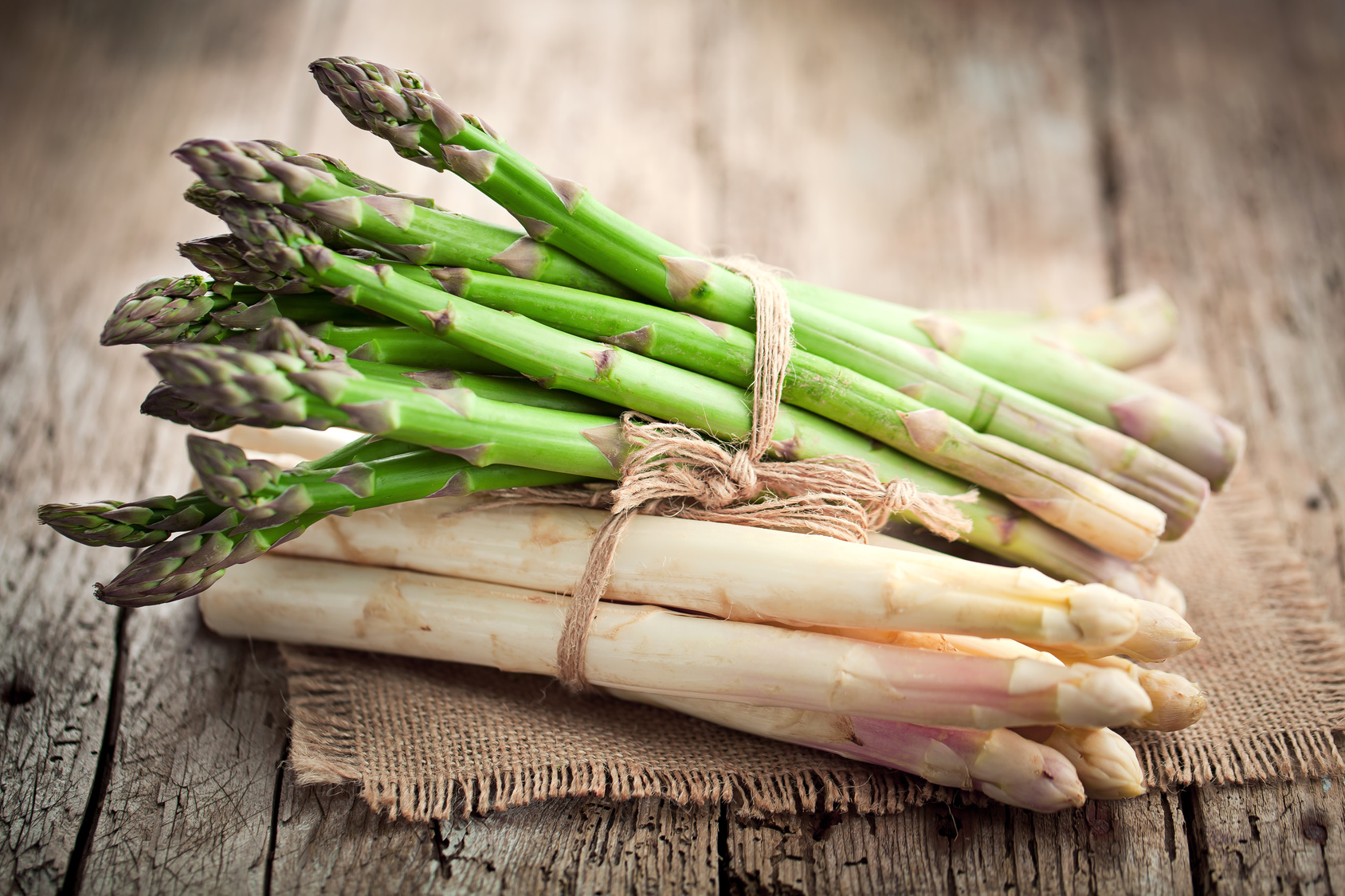The asparagus has been growing in the fields for about two weeks now! In some supermarkets the asparagus is available earlier, because in other countries they are harvested earlier. In warmer regions, such as in Spain and Greece, asparagus can sometimes be picked already in the beginning of March. In Peru and China, they are even picked all year round. But in this country, depending on the weather, the asparagus season only starts at the end of April – beginning of May!
Asparagus is a precious delicacy, especially in Switzerland! But why are asparagus from Switzerland more expensive and asparagus from Mexico, for example, much cheaper? This article gives six reasons why asparagus in Switzerland has a higher price than in other countries.
1. Asparagus harvesting is hard work
Asparagus harvesting is real back-breaking work and therefore asparagus cutting requires a lot of physical labour. White asparagus is plucked by hand and green asparagus is cut by hand. This requires a lot of labour, which of course has to be paid in Switzerland — higher than in other countries.

2. Wages in Switzerland are high
The lowest wage in Switzerland for a harvest worker is CHF 3,200 per month according to agricultural standards — for comparison, the wage for a Mexican harvest worker is around CHF 120 per month. The price per kilo of 1st class asparagus in Switzerland is therefore about 17 CHF (seasonal average) and the price per kilo of 1st class asparagus from Mexico is 8.50 CHF. Although the price of Swiss asparagus is only about twice as much, asparagus pickers earn up to 26.7 times more than in Mexico!
The price of asparagus also includes the wages of the staff for sorting, preparing and packing, the wages of the sales staff, and the costs for distribution and marketing. All in all, it takes about half an hour to harvest, wash, sort and prepare a kilo of asparagus — which involves a lot of labour. A very fast and skilled asparagus picker can harvest approximately 8 kg of asparagus per hour, which translates to about 985 kg – 1,408 kg asparagus per month. For 1 kg of asparagus for 17 CHF, the value of the asparagus harvested per month is about 16,755 – 23,936 CHF. This means that the asparagus harvester gets about 13% for their harvest. That doesn’t sound like much — but many other steps in the life cycle of the asparagus have to be financed as well, of course. This ranges from sowing to storage in the supermarket (Jucker Farm 2021).
3. Swiss soil isn’t ideal for growing asparagus
A high clay content in the soil means that the asparagus often break off. They must therefore be dug out very carefully and cut with an asparagus knife. A sandy soil is optimal for asparagus.

4. The asparagus beds must be laid out separately
Unlike other beds, asparagus beds must first be milled or shaped. The creation of the beds is also an important cost factor. In addition, the beds created for the asparagus do not produce their full yield until the fourth year and must be replaced every eight to ten years.

5. Other factors of the asparagus harvest
Washing the asparagus is not a cheap process, as a special sorting and washing machine is required. The other infrastructure consists of: blast chillers, ploughs, ridge formers, and cultivators, this equipment is not very cheap to buy. All this has to be covered by the harvested asparagus as well.
6. During Corona, Asparagus has become even more expensive
The pandemic continues to leave many harvesters unavailable, and with the ones who are available come higher costs due to entry requirements, infection control measures and limited accommodation options. During the 2020 asparagus harvesting season, about 30% of the harvest workers were not available.
So as you can see, there are a few reasons why asparagus is a bit more expensive in Switzerland. However, there are also a few other reasons why it is worth paying the price: Asparagus harvested in the region is incredibly crisp and fresh. Long-travelled asparagus, on the other hand, loses its flavour and even nutrients over time, dries out and becomes woody. In addition, asparagus from distant countries needs 48 times more fuel than locally grown vegetables.
Here are a few tips to finish off:
It’s best to get everything out of the white goodness. For example, you can make an aromatic broth for a soup or risotto from asparagus peelings and trimmings. You can also marinate the asparagus greens and serve them with the asparagus.
- Avoid food waste through good storage!
- Take the asparagus out of the packaging after buying.
- Store unpeeled, raw asparagus in the vegetable compartment of the fridge for up to four days. Wrap them in a damp kitchen towel.
- You can also put a bunch of green asparagus upright in a jar of water. Only fill with about 2 to 3 cm of water.
- Wrap peeled asparagus in plastic wrap. Put them in the fridge and use them the next day at the latest.
- In a pinch, you can also freeze raw asparagus.
If you have decided to buy asparagus in an environmentally friendly and sustainable way, it makes sense to dig a little deeper into your pocket for the royal vegetable. And one more thing: asparagus is especially popular at the beginning of the season, which is why the price is also highest at the beginning. As the asparagus season progresses, however, prices fall: because supply increases but demand decreases. If you don’t want to pay the high prices, just wait until the middle of May.











What do you think?